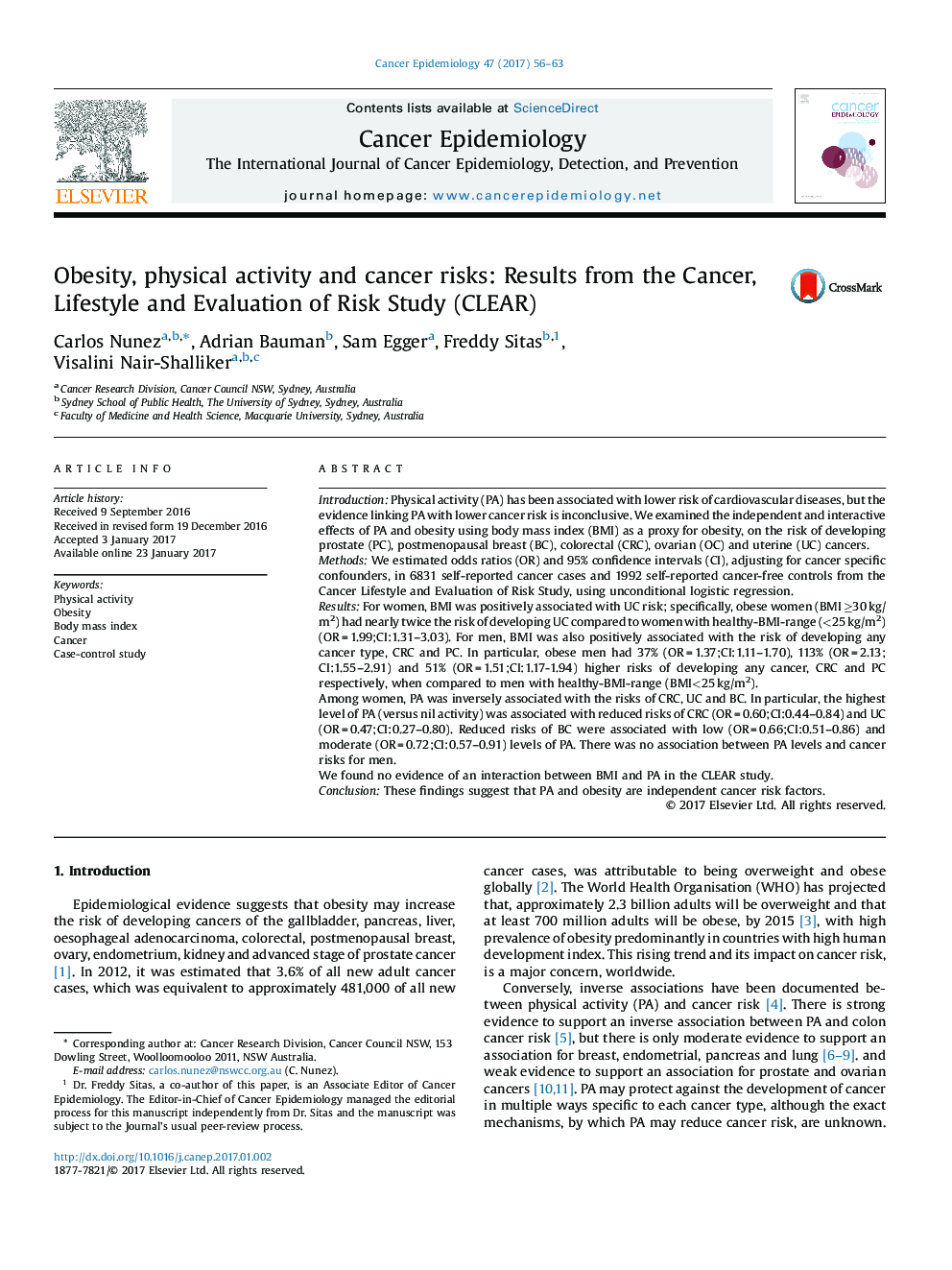| کد مقاله | کد نشریه | سال انتشار | مقاله انگلیسی | نسخه تمام متن |
|---|---|---|---|---|
| 5524924 | 1546528 | 2017 | 8 صفحه PDF | دانلود رایگان |

- Obesity and Physical activity are both independent predictors of cancer risk.
- Cancer prevention may be achieved if both healthy BMI and physical activity are encouraged.
- There was no evidence of cancer risk modification between PA-BMI interactions in the CLEAR study.
IntroductionPhysical activity (PA) has been associated with lower risk of cardiovascular diseases, but the evidence linking PA with lower cancer risk is inconclusive. We examined the independent and interactive effects of PA and obesity using body mass index (BMI) as a proxy for obesity, on the risk of developing prostate (PC), postmenopausal breast (BC), colorectal (CRC), ovarian (OC) and uterine (UC) cancers.MethodsWe estimated odds ratios (OR) and 95% confidence intervals (CI), adjusting for cancer specific confounders, in 6831 self-reported cancer cases and 1992 self-reported cancer-free controls from the Cancer Lifestyle and Evaluation of Risk Study, using unconditional logistic regression.ResultsFor women, BMI was positively associated with UC risk; specifically, obese women (BMI â¥30 kg/m2) had nearly twice the risk of developing UC compared to women with healthy-BMI-range (<25 kg/m2) (OR = 1.99;CI:1.31-3.03). For men, BMI was also positively associated with the risk of developing any cancer type, CRC and PC. In particular, obese men had 37% (OR = 1.37;CI:1.11-1.70), 113% (OR = 2.13;CI:1.55-2.91) and 51% (OR = 1.51;CI:1.17-1.94) higher risks of developing any cancer, CRC and PC respectively, when compared to men with healthy-BMI-range (BMI<25 kg/m2).Among women, PA was inversely associated with the risks of CRC, UC and BC. In particular, the highest level of PA (versus nil activity) was associated with reduced risks of CRC (OR = 0.60;CI:0.44-0.84) and UC (OR = 0.47;CI:0.27-0.80). Reduced risks of BC were associated with low (OR = 0.66;CI:0.51-0.86) and moderate (OR = 0.72;CI:0.57-0.91) levels of PA. There was no association between PA levels and cancer risks for men.We found no evidence of an interaction between BMI and PA in the CLEAR study.ConclusionThese findings suggest that PA and obesity are independent cancer risk factors.
Journal: Cancer Epidemiology - Volume 47, April 2017, Pages 56-63